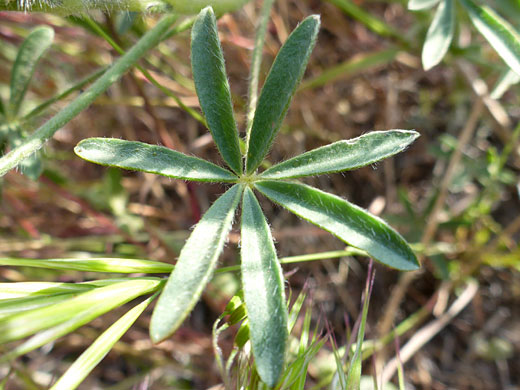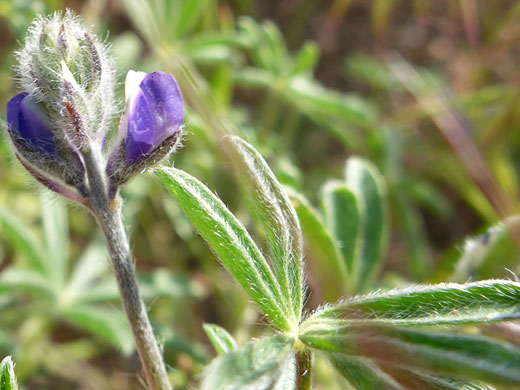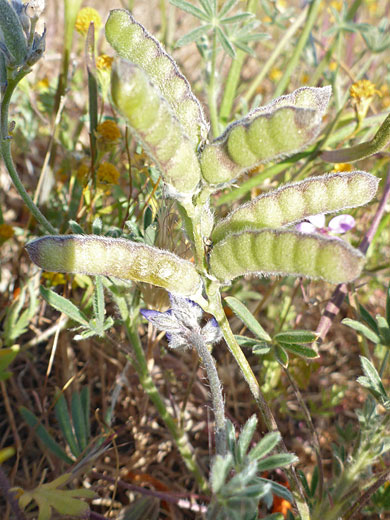Common names:
Two-color lupine, miniature lupine
Family:
Scientific name:
Lupinus bicolor
Main flower color:
Range:
The Pacific states, and south Arizona
Height:
Up to 16 inches
Habitat:
Grassland, woodland, disturbed sites, open ground, from sea level to 5,000 feet
Leaves:
Divided into 5, 6 or 7 linear or narrowly oblanceolate leaflets, up to 1.5 inches long
Season:
March to June
The usual two colors of the flowers of lupinus bicolor are white - the center of the banner petal, and the keel petal - and blue for the remaining petals, though all petals can also be pale pink, or more extensively white. The banner center darkens with age. Petals may have an irregular pattern of darker spots. The margins of the keel petal may be ciliate. The calyx is deeply lobed, and covered with long, straggly white hairs, as are the reddish stems. Flowers form in whorls, each usually of five heads, each subtended by a narrow, hairy bract, similar in length to the calyx.
Leaves are attached by stalks of up to 3 inches; about twice as long as the leaflets, which have a sparse hair covering, or may be hairless. Fruits are compressed pods, containing between five and eight seeds, up to 1.2 inches long, hairy, and often purplish along the margins
Leaves are attached by stalks of up to 3 inches; about twice as long as the leaflets, which have a sparse hair covering, or may be hairless. Fruits are compressed pods, containing between five and eight seeds, up to 1.2 inches long, hairy, and often purplish along the margins
All Contents © Copyright The American Southwest | Comments and Questions | Contribute | Site Map




